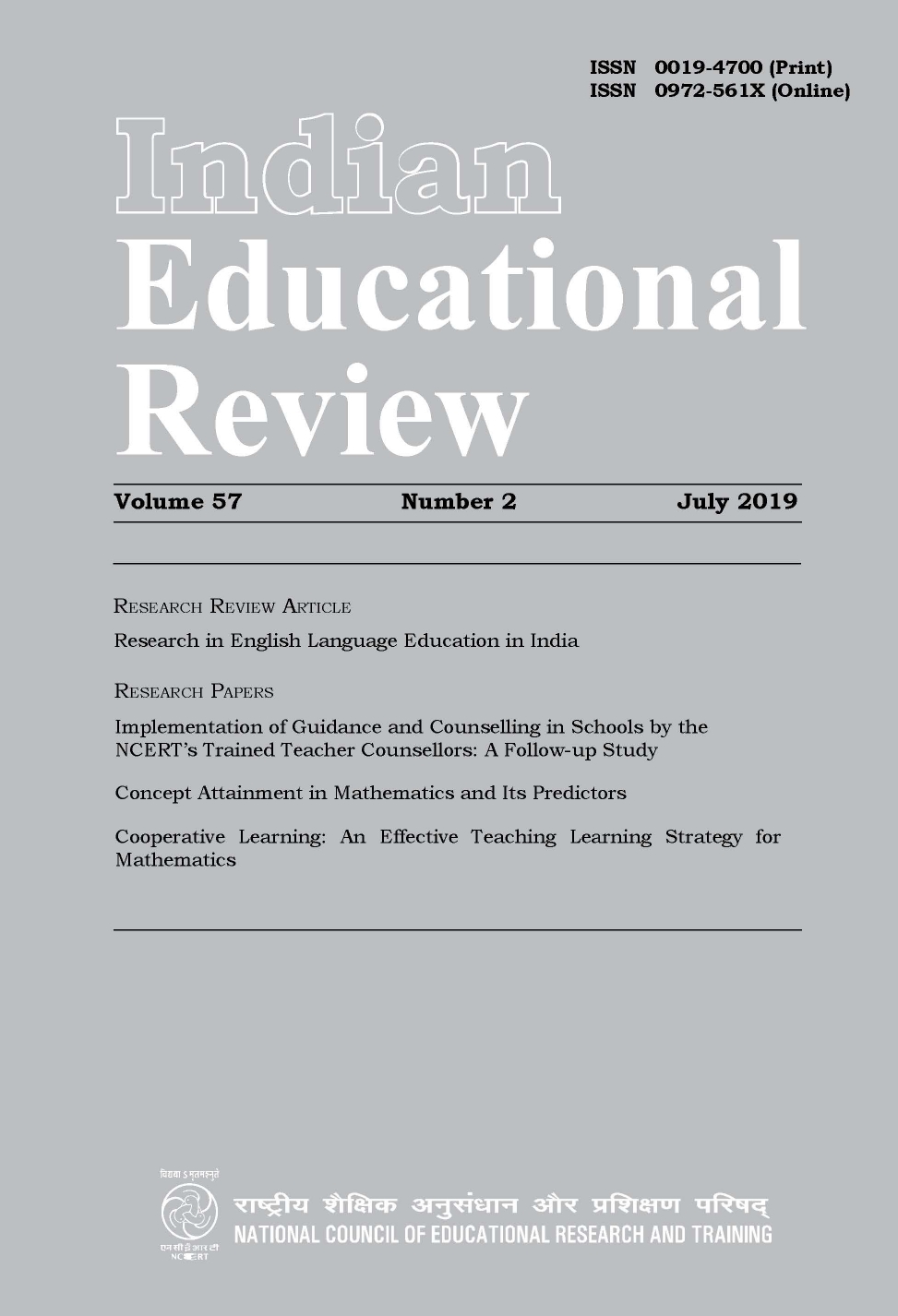Published 2019-07-31
Keywords
- Continuous Professional Development,
- National Commission on Education
How to Cite
Abstract
English language education in India is vast and complex. Research, both in school and higher education during the current and past decades reflects the felt realities and the idealism and warrants addressing the needs of the new millennium. This review of research traces language policy and the role and place of english language in education, multilingualism in school education, language curriculum design, materials in the English language teaching, methods and processes of teaching of English and how English language classroom operates in the diverse Indian contexts. Research on different literacy development and language skills, english language teaching at the university level and English for specific purposes, particularly English for engineering education, use of ICT in English language teaching, professional development of language teachers and teaching young learners, are also reviewed with a view to understand how research has progressed during the last decade. The tension between the demand for English language education, both as a language and as a medium, and the ideal of mother tongue based multilingualism; the three models of curriculum development in the States— adoption of National Curriculum Framework (NCF) fully, adoption of NCF with modification and development of a new curriculum based on the ideas of NCF and their implications on the English language curriculum are well illustrated in the studies reviewed. There is a call for a shift to communication oriented processes like communicative approaches and task based language teaching particularly at graduation level for meeting the demands of higher education and job market. Research also brings out the constraints in the English language education in terms of the English language environment in school, teachers and materials leading to varied disparities in the delivery of English language in the classroom. In sum, research findings warrant for action for a harmonious and cognitively sound language policy. A policy that calls for an engaging curriculum and materials which promote learner’s contact with English language and learner-learner interaction in the classroom is what research findings recommend. This should be achieved with the instrumental support of continuing professional development of teachers and learner friendly assessment.

